Microbial persistence and survival in glacial ice
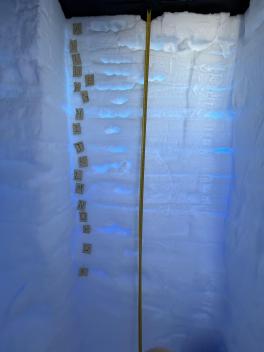
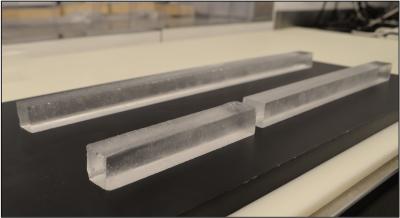
Ice cores from glaciers and ice sheets provide detailed, multiproxy archives of paleoenvironmental conditions, furthering our understanding of Earth's climate. Microorganisms in the West Antarctic Ice Sheet are buried over glaciological time and form a stratigraphic record with potential links to the Southern Hemisphere climate. However, microbial cells that land on the ice sheet are subject to the stresses of changing habitat conditions due to burial and low energy conditions associated with long-term isolation in an ice sheet. These post-depositional processes may lead to environmental filtering of cells over time and a loss of fidelity within the WD stratigraphic record of microbial cells. We know little about how and if microorganisms survive burial and remain viable over glacial-interglacial time periods within an ice sheet.
The role of our group at OSU is to identify the viable and preserved community of microorganisms and determine whether there are core genomic adaptations that permit cell viability.
Support for this project comes from: NSF award #2228257 – Office of Polar Programs and further in-kind sequencing support from DOE-Joint Genome Institute
Collaborators: Dom Winski, University of Maine; Pamela Santibáñez, Universidad de Magallanes; Joe McConnell and Nathan Chellman, Desert Research Institute (Reno)
We are currently hiring a Postdoctoral Research Scientist to work on aspects of this project and related glacial ice microbiology.
Learn about available positions by contacting Michaud.58@osu.edu.
The Sensitivity of the West Antarctic Ice Sheet to 2°C warming (SWAIS2C)
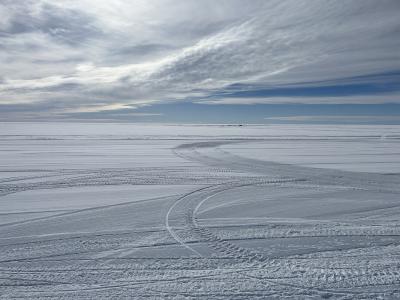
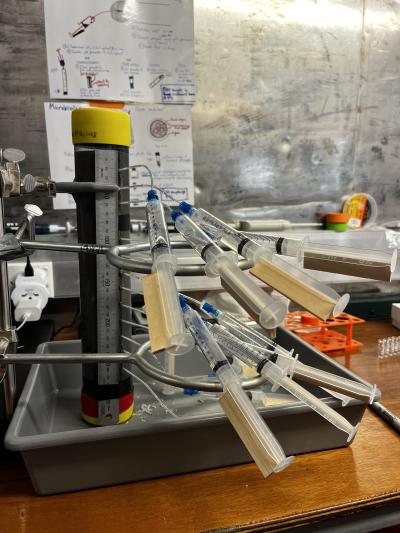
This international continental drilling program (ICDP) project aims to collect seafloor sediments beneath Antarctica's Ross Ice Shelf. Our target is sediment from the last interglacial periods when the world was warmer, and the West Antarctic Ice Sheet was less extensive and possibly collapsed. Sedimentary records before and after the last interglacial sediments will provide clues as to how the West Antarctic Ice Sheet responded to a 2°C warmer world. These clues will help us predict how the West Antarctic Ice Sheet will respond to the warming we are currently experiencing.
Our role as microbiologists on the project is to understand how these last interglacial sediments (deposited during open marine conditions) differ from modern glacial diamict and if the last interglacial sediments provide food or other resources that help to fuel contemporary microbial activity in the less nutrient-poor glacial diamict. There are clues from past subglacial research that these interglacial sedimentary layers do influence the microbial activity beneath the West Antarctic Ice Sheet. However, we have not had the chance to sample these deeply buried interglacial sediments directly until now!
External project link: www.swais2c.aq/
This is a large, international project with numerous science team members; please see the link above for the complete list. Dr. Molly Patterson at Binghamton University leads the United States NSF-funded part of the project.
A subaward to The Ohio State University from Binghamton University supports this project.
This project seeks a graduate student with an interest and background in marine sediments, microbiology, and Antarctic Ice Sheet history.
Boundary Layer Under-ice Environmental Sensing
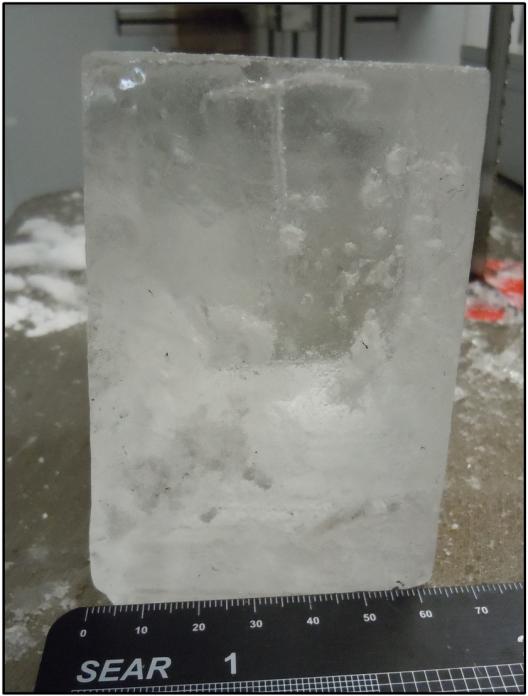
Our project will develop a novel platform, imaging lake ice and ice sheet/shelf imaging, two different scales of thickness. We aim to improve the range and resolution of current technology while also decreasing the size of the overall instrument. These improvements will allow both the limnology and glaciology communities to utilize the technology for ice structure and thickness studies.
The role of our group at OSU is to help validate the instrument by providing ground truth measurements of lab-created ice, then to do the same except in field settings (i.e., lake ice first before large-scale field trips to polar glaciers). We aim to better parameterize ice bottom roughness, internal structure, and thickness measurements.
Support for this project comes from: NSF award #2322221 – Division of Electrical, Communication, and Cyber Systems
Collaborators: Alexander Forrest (lead PI) University of California, Davis; Miao Yu (co-PI) University of Maryland; Roger Wang (co-PI) Rutgers University
Light in the Dark: Fiber optic sensing of climate-critical carbon cycle components at water/ice-air interfaces
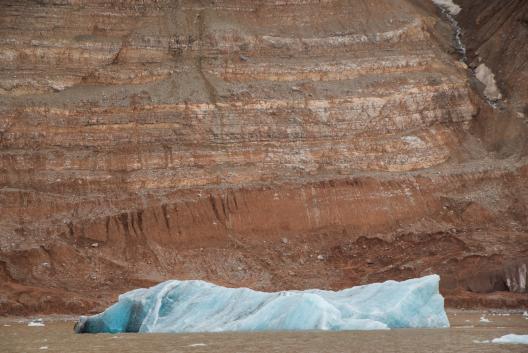
Our project will develop a novel, multiparameter fiber-optic sensor deployed in a lake throughout the winter and spring, typically when lake ice forms and melts. The benefits of these miniaturized sensors are that they can be deployed on a stationary mooring or flown on an AUV beneath the ice. Together, these two deployments will capture high temporal-spatial resolution data throughout the year and capture the spatial and temporal heterogeneities of important water quality and climate-relevant solutes in the lake ecosystem.
The role of our group at OSU is to help validate the novel sensor against state-of-the-art sensors in the laboratory and then do the same from field-collected samples.
Support for this project comes from: NSF Award #2322281 – Division of Ocean Sciences
Collaborators: Miao Yu (co-PI) University of Maryland; Roger Wang (co-PI) Rutgers University; Alexander Forrest (co-PI) University of California, Davis; David Schmale (co-PI) Technological University of Virginia
We will conduct our fieldwork at the University of Wisconsin, Madison's Trout Lake Field Station, in northern Wisconsin.
Both technology projects seek a graduate student with an interest and background in limnology, engineering, or geochemistry.
Thawing permafrost microbiology
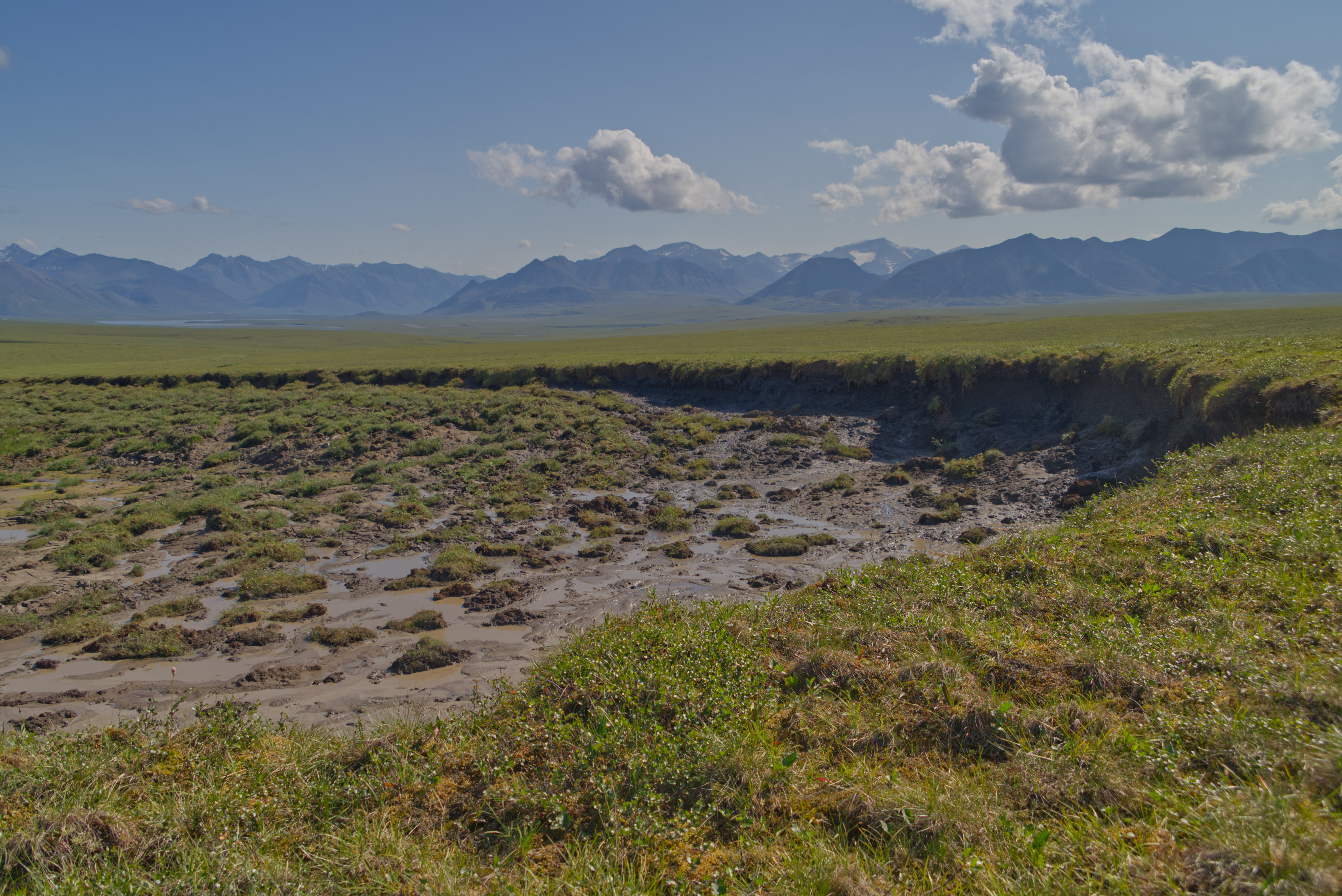
Thaw slumps are areas of land when massive ground ice has become exposed on a hillslope and begins to melt. These destabilized hillslopes slump and typically flow into lakes and rivers. The lakes and rivers downstream of these thaw slumps receive increased meltwater, suspended material, nutrients, and microorganisms. The slumps themselves are also unique ecological islands of primary succession. Microbial activity in these new slumps begins and establishes the prevailing geochemical conditions and, thus, the continued transport of nutrients and carbon from the thaw slumps to lakes and rivers.
The role of our group at OSU is to understand which microorganisms are active in the thaw slumps and their contribution to element cycles that may impact downstream aquatic ecosystems.
Collaborators: David Emerson and Amy Doiron (Bigelow Laboratory for Ocean Sciences), Trista Vick-Majors (Michigan Technological University)
